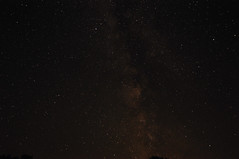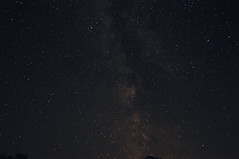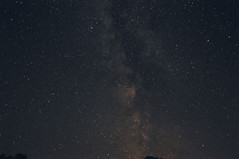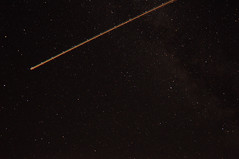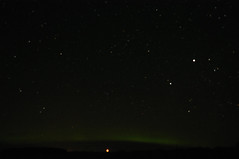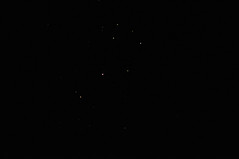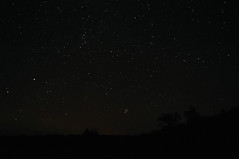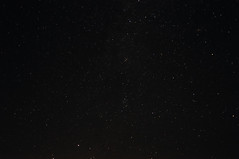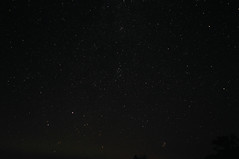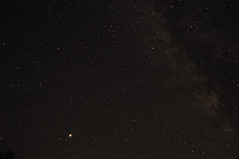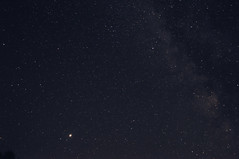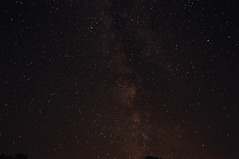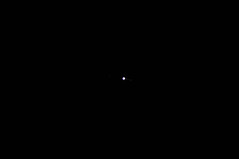The Andromeda Galaxy
This particular galaxy is probably the most famous in the night sky. It is bright enough, at magnitude 4.4, to be seen with the naked eye. It is also known as M31 (or Messier 31) and NGC 224. This galaxy is like our own Milky Way in that it is a spiral galaxy believed to be similar in mass. It is located approximately 2,500,000 light years away and is found at Right ascension 00h 42m 44.3s, Declination +41° 16′ 9″[1].

Photo courtesy of NASA
This nebula is also known as M42 or NGC 1976. It is referred to as a diffuse nebula (and contains mostly ionized hydrogen) and is located just below Orion's Belt at Right ascension 05h 35m 17.3s, Declination -05° 23′ 28″. At an apparent magnitude of +3.0, it is visible to the naked eye and is approximately 1,344 light years away. The Nebula is part of a much larger nebula known as the Orion Molecular Cloud Complex. This Complex extends throughout the constellation of Orion and includes Barnard's Loop, the Horsehead Nebula, M43, M78 and the Flame Nebula. Stars are forming throughout the Orion Nebula, and due to this heat-intensive process the region is particularly prominent in the infrared.

Photo courtesy of Wikipedia.org
The HyadesI have never seen this before tonight. I thought it was really neat. I found it by accident. I had been looking for Orion and the Pleiades. Almost in between them, I could see a fuzzy patch, so I pointed my scope at it and saw this open cluster. It is classed as an open cluster because the stars are not as tightly bound by gravity as they are in a globular cluster. It consists of a roughly spherical group of 300 to 400 stars that share the same age, place of origin, chemical content, and motion through space. Hyades is approximately 151 light years away and can be found at Right ascension 04h 27m, Declination +15° 52′. The Hyades Cluster, at apparent magnitude 0.5, lies in the constellation Taurus, where its brightest stars form a rough "V" shape along with the still brighter red giant Aldebaran. Contrary to how it appears, Aldebaran is completely unrelated to the Hyades, as it is located much closer to Earth and merely happens to lie along the same line of sight.

Photo courtesy of SEDS
Perseus Double ClusterThese two open clusters are known as NGC 884 and NGC 869 (or more commonly known as the Double Cluster). They are visible to the naked eye and lie in the constellation Perseus, below Cassiopeia. NGC 884 is approximately 7600 light years away with NGC 869 being about 6800 light years away. They can be found at Right ascension 2h 20m, Declination 57° 08′. In the photo below, NGC 884 is the on the left and NGC 869 on the right. It is said they have blueshifted as well, which is a method of determining their distance using light wavelengths, etc. They are traveling toward Earth at approximately 22km/s.

Photo courtesy www.astrophoto.net














